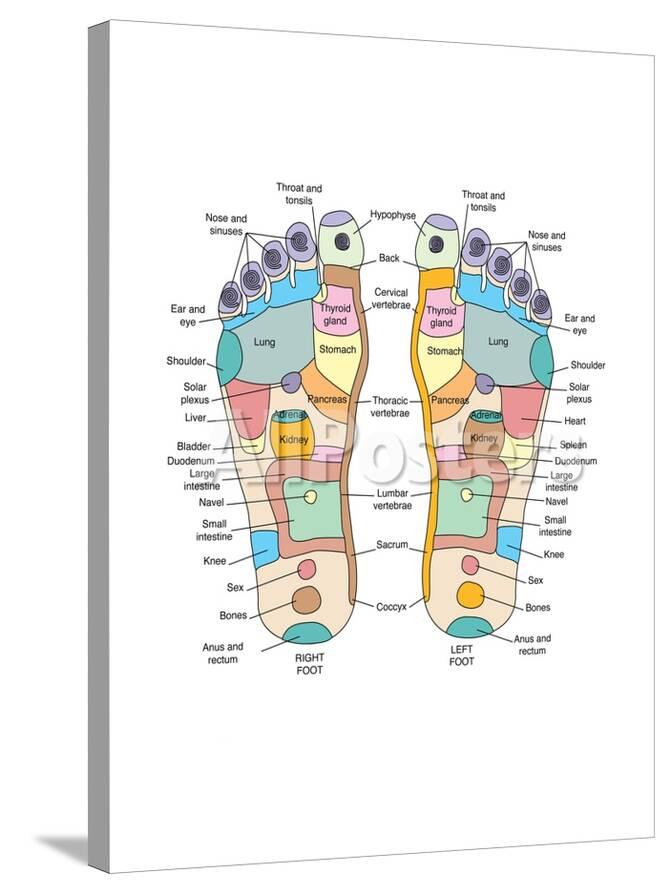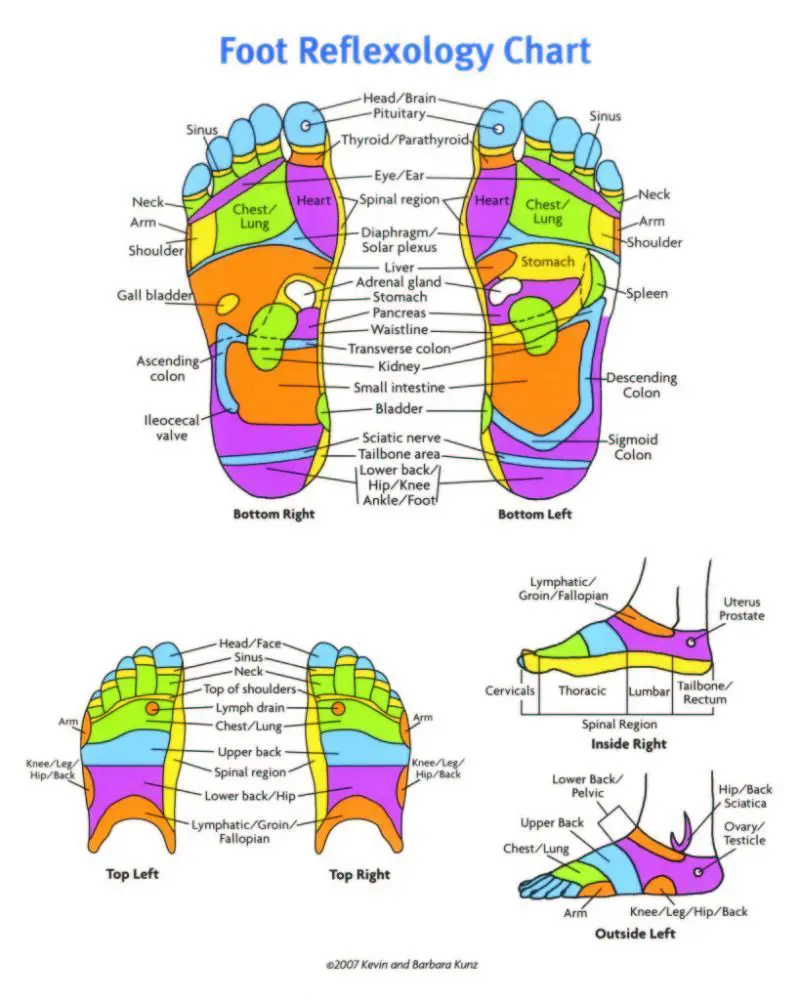HAND REFLEXOLOGY CHART Reflexology can be applied to the hands, feet and ears. There are strategic points located in these parts of the body that reflect in our internal organs through electrical impulses that are transmitted to the brain when we stimulate them. FOOT REFLEXOLOGY CHART. Trapez i us lung. Bronchi suprarenal and I iver I bladder transverse colon ascending CO I on small intestine append i x frontal frontal sinus.
When you look at the sole of your feet, you probably just see feet, however, as a reflexologist, when I look at the soles of feet, I see a map of the body, organs and glands.
The original foot maps were drawn in the 1930s by Eunice Ingham, a physiotherapist, student and advocate for zone therapy. Zone therapy showed that parts of the body corresponded to other parts by applying pressure to one area, it anaesthetised a corresponding area. Knowing this, Eunice felt that the feet should be specifically targeted because of their highly sensitive nature. This enabled her to chart the feet in relation to the zones and their effects on the rest of the anatomy, until she had evolved on the feet themselves, a map of the entire body.
Today, as the maps are not an anatomical representation of the body, reflexology maps differ slightly from one another, depending on their author.


Reflexology Map For Hands And Feet
The Association of Reflexologists have put together an interactive foot chart for information purposes, to enable you to view the foot reflexology points and see what they correspond to. To take a look, just click on the icon below.
Reflexology Map Of Your Feet

Map Of Feet Reflexology
Reflexology is a natural therapy using the technique of applying gentle pressure to the different reflex areas on the feet, to bring about a state of deep relaxation and to stimulate the body’s own healing processes.

